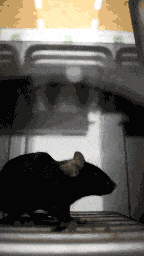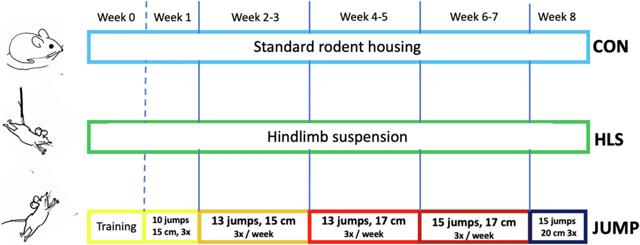Jumping mice have demonstrated what astronauts should do on Mars and the Moon.
In the coming years, humans will return to the Moon, and within a dozen years, they will attempt to land on Mars. While the first is quite straightforward and, judging by the experience of the 1960s, entirely feasible, the second is more complicated. A series of scientific studies have shown that astronauts on the ISS experience rapid degradation of the cartilage covering the knee bones. In earthly conditions, prolonged thinning of such cartilage leads to osteoarthritis and often results in an inability to move independently due to severe pain.
Of course, cartilage thinning on the ISS occurs in a zero-gravity environment, whereas on Mars, it is 0.38 of Earth’s gravity. Nevertheless, concerns persist. What if, after a three-month flight to the Red Planet (which is the trajectory planned by SpaceX), an astronaut finds it difficult to move due to the reduced thickness of the knee cartilage?
Researchers from Johns Hopkins University (USA) conducted a nine-week experiment on laboratory mice to prevent such situations. They described the results of their work in the journal npj Microgravity.
The scientists divided the mice into three groups: one group was restricted from moving—its hindquarters were suspended so that the animal could not rest its back legs on the ground. Another group was placed in a special apparatus (shown in the photo), where the mice had to make jumps of progressively increasing difficulty. The third group served as a control.
To motivate the rodents, the researchers trained them to jump in response to a blinking green LED. Following the LED's blink, an electrical current was delivered to the floor in the "jumping apparatus"—starting off weak, then increasing to 175 volts. The animals quickly understood that they needed to jump upwards (to a platform with a different floor, where no current was applied) after the LED signal and even before the current was delivered.

Nine weeks of the experiment is roughly equivalent to five years of human life. By the end of this period, the cartilage thickness in the legs of the suspended group decreased by 14% compared to the control group. In contrast, the jumping group saw an increase of 26%.
Moreover, although it was not the experiment's goal, the jumping group significantly strengthened their bones: their tibias showed a mineral density 15% higher than that of the control group. The spongy bone tissue at the ends of the leg bones became substantially thicker and stronger than that of the control group. This tissue absorbs shock loads during jumping and running.
Notably, the training volume in this study was very small. The mice initially jumped 10 times per training session (at 15 centimeters), only three times a week. By the end of the experiment, they were jumping 15 times (at 20 centimeters), yet still only three times a week. In space (and elsewhere), humans typically spend much more time training. For instance, astronauts on the ISS work out for at least two hours a day; otherwise, they would quickly lose muscle and bone mass. Upon returning to Earth, they would be like the astronauts of mission “Soyuz-9”, who, after 18 days of flight in a cramped spacecraft (where there is no room for exercise equipment), could not walk to the bus by themselves.

From their experiment, the scientists concluded that jump training programs for astronauts need to be adapted. In fact, such a program should begin months before space flights. Additionally, a compact jumping apparatus should be created for space so that individuals can train while in flight. It is possible that such an apparatus will reduce the overall time astronauts require for training today. This will be particularly valuable on the Moon and Mars, where people's time will be extremely limited. Similar training, albeit in a modified format, may also benefit patients with early-stage osteoarthritis on Earth, believe the authors of the new study.